Xanthomendoza oregana (Gyeln.) Søchting, Kärnefelt & S.Y. Kondr.
Mitt. Inst. allg. Bot. Hamburg, 30-32: 237, 2002. Basionym: Xanthoria oregana Gyeln. - Rev. Bryol. Lichénol., n.s., 5: 33, 1932.
Synonyms: Xanthomendoza poeltii (S.Y. Kondr. & Kärnefelt) Søchting; Xanthoria poeltii S.Y. Kondr. & Kärnefelt
Distribution: N - Piem (Bertrand 2021), Lig (LD-1400315).
Description: Thallus foliose to subfruticose, heteromerous, dorsiventral, bright yellow to light orange, forming small to medium-sized, up to 3 cm wide tufts which often merge to cover larger surfaces. Lobes flattened to concave, slightly raised to ascending, 0.4-1 mm wide, smooth or slightly wrinkled, the tips with fine branchlets, with marginal to submarginal blastidia. Lower surface white, smooth to somewhat wrinkled, often with white, scattered rhizines. Upper and lower cortex paraplectenchymatous; medulla white. Apothecia very rare, lecanorine, laminal, stipitate, up to 3.5 mm across, with an orange disc and an often sorediate thalline margin. Thalline exciple paraplectenchymatous; proper exciple a strongly gelatinized plectenchyma with unoriented, short-celled hyphae; epithecium orange-brown, c. 10 µm high, K+ purple-red; hymenium colourless, 70-90 µm high; paraphyses simple or rarely branched, septate; hypothecium colourless or pale orange-brown, 25-40 µm high. Asci 8-spored, clavate, functionally unitunicate, apically thickened with a broad internal beak, the inner part of apex and external cap I+ blue, Teloschistes-type. Ascospores 2-celled, polarilocular, hyaline, ellipsoid, 16-17 x 7-9 µm, the equatorial thickening (“septum”) 6-7 µm. Pycnidia immersed, coloured as upper surface. Conidia variable, ellipsoid to bacilliform within the same pycnidium. Photobiont chlorococcoid. Spot tests: thallus and apothecia K+ purple-red, C-, KC-, P-, UV+ orange. Chemistry: parietin (major), fallacinal, emodin, teloschistin and parietinic acid (chemosyndrome A of Søchting 1997).
Note: mainly epiphytic, this recently-resurrected species was frequently confused with X. ulophyllodes and/or X. fulva.
Growth form: Foliose, narrow lobed
Substrata: bark
Photobiont: green algae other than Trentepohlia
Reproductive strategy: mainly asexual, by soredia, or soredia-like structures (e.g. blastidia)
Subcontinental: restricted to areas with a dry-subcontinental climate (e.g. dry Alpine valleys, parts of Mediterranean Italy)
Commonnes-rarity: (info)
Alpine belt: absent
Subalpine belt: absent
Oromediterranean belt: absent
Montane belt: very rare
Submediterranean belt: very rare
Padanian area: absent
Humid submediterranean belt: absent
Humid mediterranean belt: absent
Dry mediterranean belt: absent
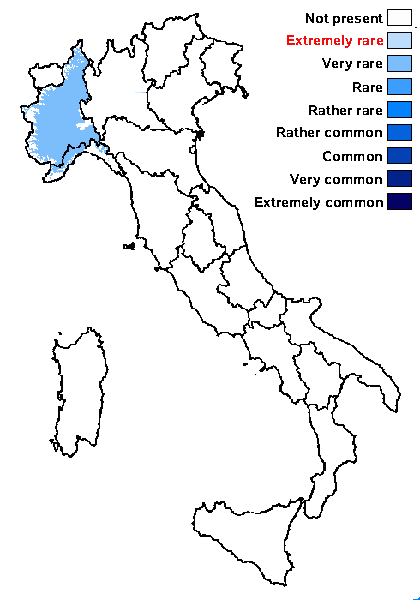
Predictive model
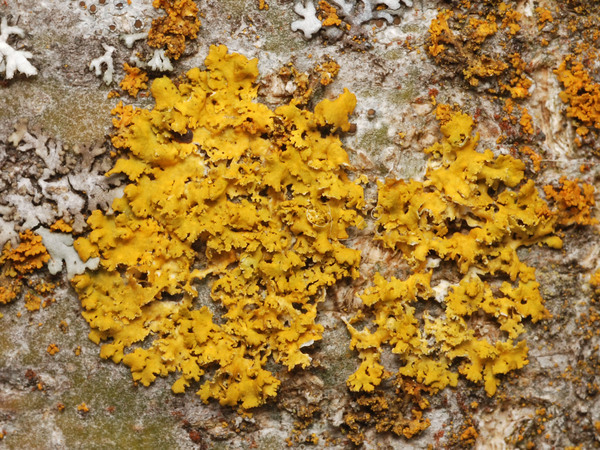
Leif Stridvall - Courtesy: Anita Stridvall - Source: http://www.stridvall.se/lichens/gallery/
as Xanthoria poeltii
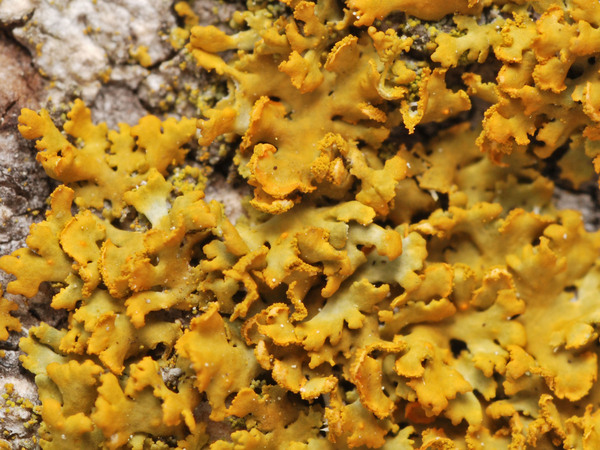
Leif Stridvall - Courtesy: Anita Stridvall - Source: http://www.stridvall.se/lichens/gallery/
as Xanthoria poeltii

Leif Stridvall - Courtesy: Anita Stridvall - Source: http://www.stridvall.se/lichens/gallery/
as Xanthoria poeltii
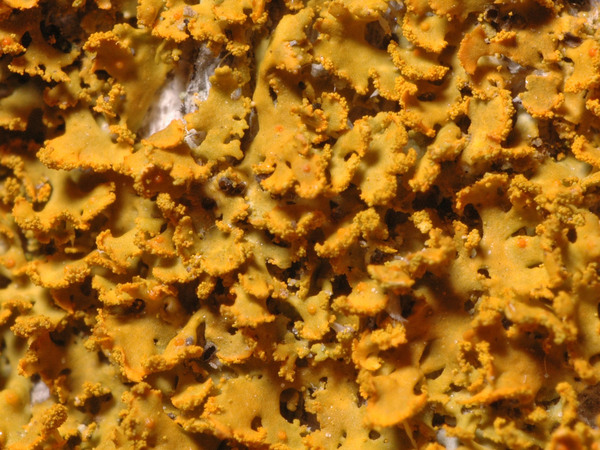
Leif Stridvall - Courtesy: Anita Stridvall - Source: http://www.stridvall.se/lichens/gallery/
as Xanthoria poeltii
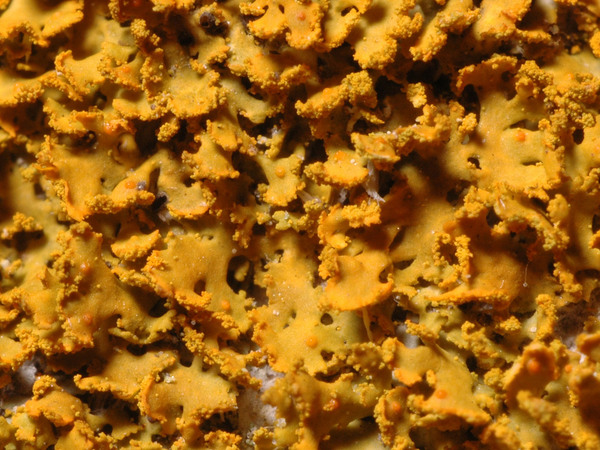
Leif Stridvall - Courtesy: Anita Stridvall - Source: http://www.stridvall.se/lichens/gallery/
as Xanthoria poeltii
Growth form: Foliose, narrow lobed
Substrata: bark
Photobiont: green algae other than Trentepohlia
Reproductive strategy: mainly asexual, by soredia, or soredia-like structures (e.g. blastidia)
Subcontinental: restricted to areas with a dry-subcontinental climate (e.g. dry Alpine valleys, parts of Mediterranean Italy)
Commonnes-rarity: (info)
Alpine belt: absent
Subalpine belt: absent
Oromediterranean belt: absent
Montane belt: very rare
Submediterranean belt: very rare
Padanian area: absent
Humid submediterranean belt: absent
Humid mediterranean belt: absent
Dry mediterranean belt: absent

Predictive model

Leif Stridvall - Courtesy: Anita Stridvall - Source: http://www.stridvall.se/lichens/gallery/
as Xanthoria poeltii

Leif Stridvall - Courtesy: Anita Stridvall - Source: http://www.stridvall.se/lichens/gallery/
as Xanthoria poeltii

Leif Stridvall - Courtesy: Anita Stridvall - Source: http://www.stridvall.se/lichens/gallery/
as Xanthoria poeltii

Leif Stridvall - Courtesy: Anita Stridvall - Source: http://www.stridvall.se/lichens/gallery/
as Xanthoria poeltii

 INDEX FUNGORUM
INDEX FUNGORUM
 GBIF
GBIF





